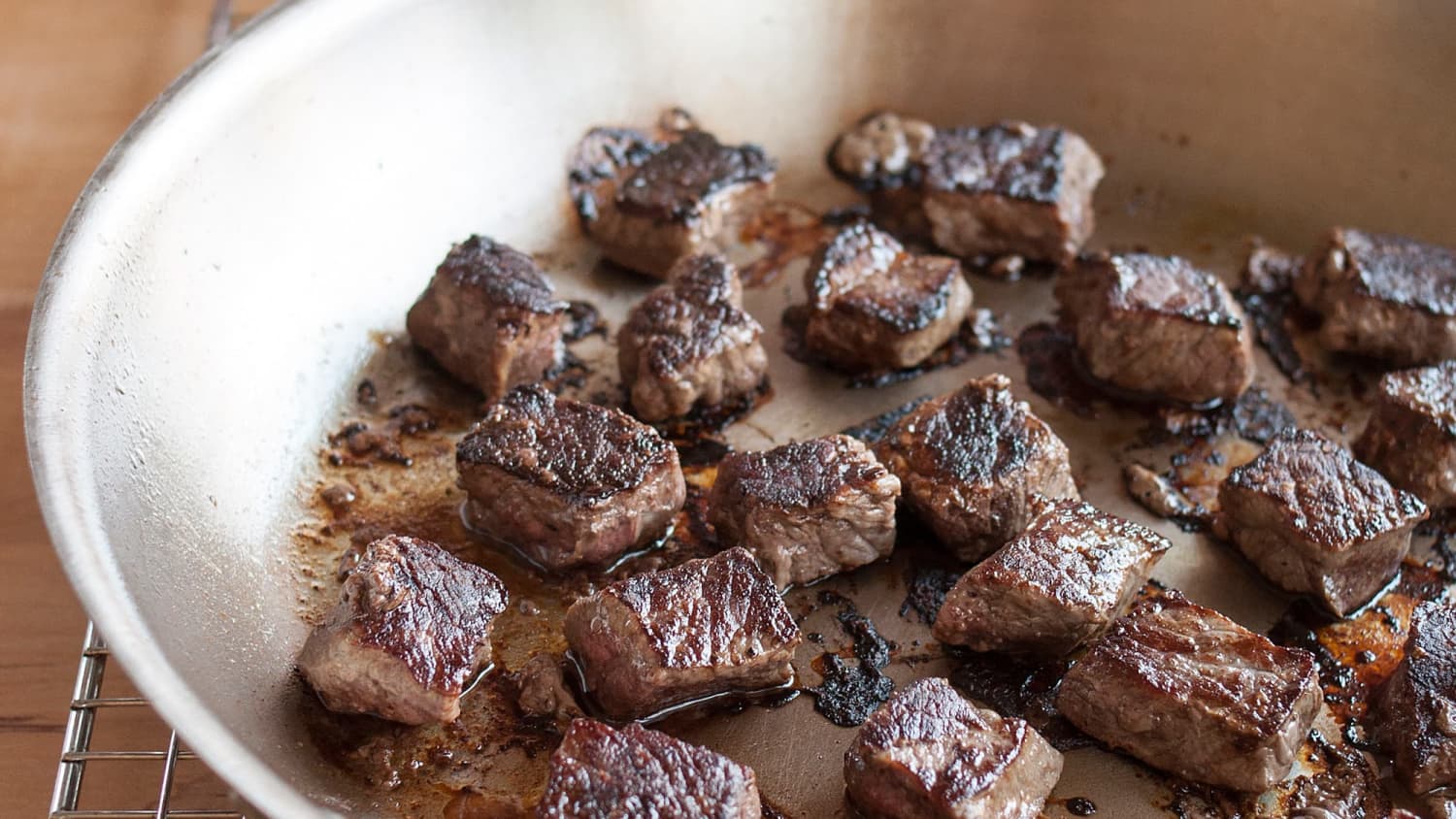How To Sear Meat
5.0
(1)
Your folders
Your folders
Author : Emma Christensen

Ingredients
Export 2 ingredients for grocery delivery
Instructions
Step 1
Choose the right pan: To properly sear meat, a stainless steel or cast iron skillet are the best. These can be heated to very high heat and help sear the meat evenly and rapidly. Enamel-lined pans and Dutch ovens can be used, but err for slightly lower heat as the enamel can crack. Do not use non-stick pans for searing.
Step 2
Prepare the meat: Prepare the meat in the manner you're planning to cook it — chop large cuts of meat into bite-sized pieces for a stew, tie up a roast with twine, and so on.
Step 3
Pat the meat dry: Pat the meat dry with paper towels. This improves the contact between the pan and the meat and creates less steam during cooking.
Step 4
Season with salt and pepper: Just before cooking, sprinkle the meat with salt and pepper. Wait to do this until you're ready to actually put the meat in the pan, otherwise the salt draws moisture out of the meat and you'll need to pat it dry again.
Step 5
Heat the skillet to medium-high: Set the skillet over medium-high to high heat. After you've seared a few batches, you'll know how high you can push it with your particular stove and your particular skillet. (On my electric stove, I start at medium-high and end up adjusting to down a few notches as the pan gets hot.)
Step 6
Coat the pan with oil: Coat the pan with enough vegetable oil to film the bottom of the pan. When it shimmers and flows smoothly, it's ready.
Step 7
Add the meat to the pan: Gently set the roast or pieces of meat in the pan. The meat should sizzle on contact and become "glued" to the bottom of the pan. If you are cooking pieces of meat, arrange them in a single layer an inch or so apart; cook in batches if necessary.
Step 8
Let the meat sear without moving: For the first minute or two, do not move the meat. Do not try to pry it off the pan; just let it sizzle.
Step 9
Flip the meat: Once the first side has completely seared, it will release easily from the pan. Shake the pan gently every so often to see if it has released. When it does, flip the meat (or pieces of meat) to the other side. The seared surface should be caramelized dark brown. → If the glaze on the bottom of the pan starts looking very dry or you smell the odor of burning, lower the heat and add a little more oil to the pan.
Step 10
Continue searing the meat: Again, do not move the meat as the second side sears. It will release easily when it has seared. If you are cooking a roast, continue to cook on all sides. For smaller pieces of meat, cook the sides if desired, or transfer them to a clean plate and continue searing the remaining meat in batches; deglaze the pan between batches (see below) and add more oil as necessary.
Step 11
Deglaze the pan: As the meat sears, a sticky brown glaze will start to build up on the bottom of the pan — this is called the "fond." Once you have finished searing, transfer all the meat to a clean plate and pour 1 cup of wine, broth, or water into the pan. It should bubble and boil immediately and start dissolving the glaze. Scrape the bottom of the pan to work up any tough bits. If you're making a stew or braise, add this liquid to the rest of the liquid being used in the recipe. If you're making steaks or other quick-cooking meat dish, this liquid can be reduced even further to make a pan-sauce to drizzle over the top of the finished dish.